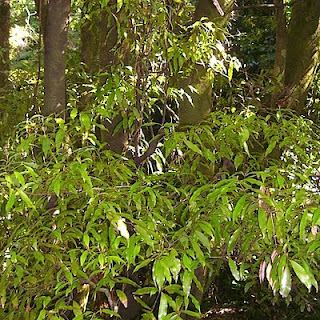Here are some of the photos.
 |
| Hen and chickens fern, Asplenium bulbiferum. The "chickens" are asexual reproduction additional to the spores that form beneath the leaf, which are part of the sexual cycle. |
 |
| Tawa (Beilschmiedia tawa) isn't very common, mostly occurring on the more fertile soils of the valley floor |
 |
| Bracket fungi basidiomata on a fallen log |
 |
| Clematis paniculata male |
 |
| Clematis paniculata male |
 |
| Juvenile leaves of kahikatea (Dacrycarpus dacrydioides). |
 |
| Sundew (Drosera auriculata) |
 |
| Fern gametophytes on a clay bank |
 |
| Kiekie, Freycinettia banksii. |
 |
| Kidney fern, Hymenophyllum nephrophyllum. |
 |
| Rewarewa seedling (Knightia excelsa) |
 |
| The view over Eastbourne and the Wellington Harbour entrance from the beech forest on the Muritai Track. |
 |
| A spider orchid Nematoceras trilobum. |
 |
| A spider orchid Nematoceras trilobum. |
 |
| Pole stand of regenerating black beech, Nothofagus solandri. |
 |
| Crown of a nikau, Rhopalostylis sapida. |
 |
| Liverworts with sporophytes releasing brown spores. |
Dear Garnock,
ReplyDeleteI'm just very curious about Rewarewa seedling (Knightia excelsa).
Does it leaf change it's venation pattern along with changing it's shape?
as shown here
http://www.nzetc.org/tm/scholarly/tei-DawFore-t1-body-d12.html
I am also an academic botanist and interested in plants evolution too,
i.e.
would it be possible at all to distinguish Proteaceae vs Myricaceae leaf dillema for European Early Tertiary similar leaves?
Cheers,
Sergey
Komarov Botanical Institute, StPete, Ru